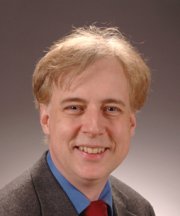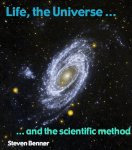 Many languages have words and phrases, called contranyms, that have two nearly opposite meanings. For example, a “citation” from Harvard University is good, but a “citation” from the Harvard University police is bad. If you run “fast”, you are moving at great speed; if you hold “fast”, you are not moving at all.
Many languages have words and phrases, called contranyms, that have two nearly opposite meanings. For example, a “citation” from Harvard University is good, but a “citation” from the Harvard University police is bad. If you run “fast”, you are moving at great speed; if you hold “fast”, you are not moving at all.
“Synthetic biology” is a contranym. In a version popular today in some engineering communities, “synthetic biology” seeks to use natural parts of biological systems (like DNA fragments or protein “biobricks”) to create assemblies that do things that are not done by natural biology (such as digital computation or specialty chemical manufacture). Here, engineers hope that the performance of the molecular parts drawn from living systems can be standardized, allowing them to be mixed and matched to give predictable outcomes, just as an electrical engineer can assemble standardized transistors to give integrated circuits with predictable performance.
Among chemists, “synthetic biology” means the opposite. Chemist’s “synthetic biology” seeks to use unnatural molecular parts to do things that are done by natural biology. Chemists believe that if they can reproduce biological behavior without making an exact molecular replica of a natural living system, then they have demonstrated an understanding of the intimate connection between molecular structure and biological behavior. This would provide a chemical understanding of life. Although central to chemistry, this research paradigm was perhaps best expressed by a physicist, Richard Feynman, in the phrase: “What I cannot create, I do not understand” (quoted in [1]).
Waclaw Szybalski had yet a different meaning in mind when he coined the term “synthetic biology” in 1974 [2]. Szybalski noted that recombinant DNA technology would soon allow the construction of new cells with rearranged genetic material. He realized that this deliberate “synthesis” of new forms of life provided a way to test hypotheses about how that material contributed to the function of natural cells. More commonly, this came to be known as “genetic engineering”.
Szybalski had the experience of chemistry in mind when he coined the term. In 1974, Structure Theory in chemistry was the most powerful theory in science. It became that way largely because chemistry possessed technology that allowed chemists to synthesize new chemical matter to study. This allows a powerful process for testing hypotheses and models, a power that Szybalski was hoping to gain for biology. These tests were (and remain) unavailable to (for example), astronomy, planetary science, and the social sciences.
By 1974, “synthetic organic chemistry” had already encroached deep within biological territory. For example, in the previous decade, “biomimetic chemists” had created small designed molecules that reproduced the elementary behaviors of single biomolecules, such as their ability to bind to ligands or to catalyze reactions. Jean-Marie Lehn in Strasbourg shared a Nobel Prize for his work developing molecules in the 1960’s to do exactly this.
Today, the chemist’s vision for synthetic biology goes further. The grand hope is that molecular design supported by Structure Theory will yield unnatural molecular species able to mimic not just binding and catalysis, but also the highest kinds of biological behavior, including macroscopic self-assembly, replication, adaptation, and evolution. Any theory that enables such a design will have demonstrated its ability to account for “life”. It will also thereby demonstrate an understanding of life, by making a synthetic version of it.
Given these nearly opposite uses of the same term, spectators are naturally puzzled. I am repeatedly asked about the emerging use of “synthetic biology” in the engineering sense: “What’s the fuss?” I am asked. “Isn’t synthetic biology just more ‘Flavr Savr’® tomatoes?” The question is raised in analogous form by molecular biologists who see in synthetic biology “contests”, which attract student participation worldwide, nothing more (and nothing less) than the cloning that has been done since the 1970’s.
Nor do molecular biologists entirely understand the hullabaloo over the (difficult to repeat) use of DNA hybridization and ligation to compute a solution to the “traveling salesman problem” [3] or create “smiley faces”. There is no obvious reason to do this kind of digital computation with DNA. After all, the rate at which DNA molecules hybridize in solution is limited by the rate constant for molecular diffusion, about 108 M-1sec-1. In layman’s language, this means that the half-life with which a DNA molecule finds its complement cannot be faster than a few hundredths of a second under typical laboratory conditions. Contrast this with the limit on the rate at which semiconductors compute: the speed of light. Even with the possibility of improved parallelism with DNA computation, there is no contest.
Francis Collins, director of the National Institutes of Health, captured a similar sentiment as applied to virus synthesis as a “synthetic biology” challenge. “This was completely a no-brainer,” he mused. “I think a lot of people thought, ‘Well, what’s the big deal? Why is that so exciting?” (quoted in [4])
The salesmanship that accompanies some discussions today of “synthetic biology” has engendered a degree of cynicism. Those whose professional lives started before the age of the internet remember more than one time where biology, it was claimed, had at last entered the realm of engineering.
For example, a quarter century ago, Science published an article entitled “Protein Engineering” by Kevin Ulmer, Director of Exploratory Research at GeneX, a biotechnology company [5]. His 1983 paper declared that the new engineering biology would “control in a predictable fashion” the properties of proteins to be building blocks in industrial processes. This new engineering would set aside “random mutagenesis techniques” in favor of a “direct approach to protein modification”. Ulmer referred to protein domains encoded by exons and the use of repressors with altered enzymes to assemble new regulatory pathways in cells. The language was in 1983 no so different from the breathless reports in the media today on the advent of “synthetic biology”.
Ulmer’s 1983 vision failed. GeneX is no longer in business. And 25 years later, we are still struggling to engineer the behavior of individual proteins.
The 1980’s engineering vision failed for reasons discussed in a 1987 review by Jeremy Knowles, then Dean of Harvard College. The review was entitled Tinkering with Enzymes [6]. Knowles, a chemist, understood that “scale” matters in the physical world. Molecules, which exist at the one to one-tenth nanometer scale, behave differently from transistors, even transistors existing at the one to one-tenth micrometer scale. This creates difficulties in transferring engineering concepts to molecular engineering.
Knowles’ “Tinkering ” comments are applicable today for those who say that biology is now engineerable. Referencing Ulmer’s paper, Knowles dryly wondered whether the engineering vision was not, perhaps, a bit “starry-eyed”. He acknowledged that “gee-whiz” experiments that put things together to “see-what-happens” could aid in understanding. But he made the point that is still true: Nothing of value comes unless the tinkering is followed by studies of what happened. Especially if the experiment fails. Absent that, modern synthetic biology, at the molecular, DNA, protein, or cell level, will be “tinkering” without consequence.
We understand much more now about the behavior of molecules, biological and otherwise, than we understood a quarter century ago because tinkers of yore studied their failures. Accordingly, the ball has been moved, from small molecules to proteins and now, to synthetic genes, protein assemblies, and cells and their assemblies. We are still doing what might be best called “Tinkering Biology”; we are just doing it farther down the field. This term will be appropriate until failures in synthetic biology are commonly examined to understand what went wrong.
However, the contranymic views of “synthetic biology” have one thing in common. Synthesis is a research strategy, not a field [7][8]. Synthesis sets forth a grand challenge: “Create an artificial chemical system capable of Darwinian evolution.” Or: “Create a set of DNA bricks that can be assembled to form an adding machine.” Or: “Rearrange a set of regulatory elements to make a cell that detects nerve gas.” Or: “Assemble enzyme catalysts from a variety of organisms to generate a pathway to make an unnatural chemical that is part of an anti-malarial drug.” Attempting to meet this challenge, synthesis drags scientists and engineers across uncharted territory, where they must encounter and solve unscripted problems. If their guiding theory is wrong, the synthesis fails, and fails in a way that cannot be ignored.
Synthesis, as a research strategy, has a value different from observation, analysis, and probing, other strategies used in science. Here, as often as not, observations are often either discarded or rationalized away when they contradict a (treasured) theory. Experiments are reported only if they get the “right” answer.
Selection of data to get the “right” answer has a long tradition in biology. A well-known example is Gregor Mendel, who evidently stopped counting round and wrinkled peas when the “correct” ratio (which is 3:1) was reached. Objective observations have an uncanny ability to confirm a desired theory, even if the theory is wrong.
Self-deception is far more difficult when doing synthesis. If, as happened with the Mars Climate Orbiter, the guidance software is metric and the guidance hardware is English, one can ignore the incongruent observations (which was done) arising from a false theory in transit all of the way to Mars. But when the rocket gets to Mars, if the theory is wrong (and it was), the rocket crashes (and it did).
For this reason, synthesis as a research strategy drives discovery and paradigm shift in ways that observation and analysis cannot. Science is, after all, a human intellectual activity that incorporates a mechanism to avoid self-deception [8]. Synthesis provides such a mechanism. And for those who do not capture this, the benefit of this mechanism will be largely lost.
References
[1] S. Hawking, The Universe in a Nutshell, Bantam Spectra, New York, 2009.
[2] W. Szybalski, in: A. Kohn, A. Shatkay (Eds.), Control of Gene Expression, Plenum Press, New York, 1974, pp. 23-24, 404-405, 411-412, 415-417.
[3] L. M. Adleman, Science 266 (1994) 1021-1024.
[4] E. Regis, What is Life? Investigating the Nature of Life in the Age of Synthetic Biology, Oxford University Press, Oxford, UK, 2009.
[5] K. M. Ulmer, Science 219 (1983) 666-671.
[6] J. R. Knowles, Science 236 (1987) 1252-1258.
[7] S. A. Benner, A. M. Sismour, Nature Rev. Genetics 6 (2005) 533-543.
[8] S. A. Benner, Life, the Universe and the Scientific Method, FfAME Press, Gainesville FL, USA, 2009.


Seed of life came from Mars.
It was in the late 70’s when my spiritual teacher, Shrii Shrii Anandamurti, took a small group of students for a walk in the mountains of Switzerland near the small town of Fiesch.
He said the first human being was born here. Before anyone could comment on this he continued that the seed of life came from Mars, and that Mars was a dying planet.
Then he changed the conversation and went on his way.
He often talked with me about the community of spacefaring peoples. He said they are human beings like us on the path of spirituality.
Can anyone refer me to the most promising explanation for how the random molecular components of DNA or RNA were first assembled into the coded information sequence required to support the first living entity?
bornvideos.com